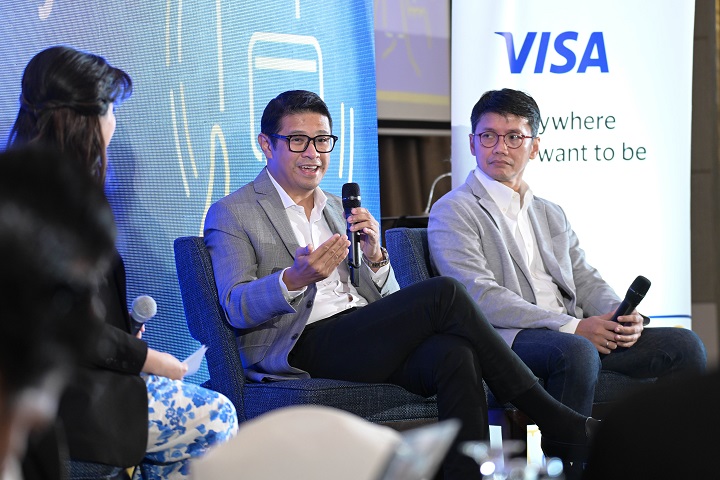
The continuous growth of cashless payments, particularly through mobile wallets and cards, has resulted in a significant decrease in the willingness to use cash among Filipino consumers. According to Visa’s latest Consumer Payment Attitudes Study in the Philippines, 50% of Filipino consumers are carrying less cash as they increasingly opt for cashless payments.
While cash remains a prevalent payment method, the study indicates that 82% of Filipinos have attempted to go cashless in 2022, with almost half (40%) succeeding for a few days. Notably, about 9% were able to go cashless for over one month.
Visa’s research further reveals a decline in the frequency of cash payments, dropping from 7.8 for every 10 purchases in 2021 to 6.4 in the following year. This shift can be attributed to two significant factors: 62% of consumers increasingly rely on cashless payments and 61% express concerns regarding the safety of carrying cash.
Conducted annually, the Consumer Payment Attitudes Study provides insights into consumer payment behaviors in key markets, including the Philippines. The latest survey, conducted from September to October of 2022, interviewed 1,000 Filipino consumers aged 18 to 65 years old.

“The increasing adoption of cashless and contactless payment methods is a testament to the growing preference among Filipinos for safe and convenient transactions. As consumers realize the benefits of cashless options such as mobile wallets and cards, we are witnessing a progressive shift towards a cash-lite society in the Philippines. The Visa Consumer Payment Attitudes Study provides encouraging data that highlights the readiness of Filipinos to embrace secure and seamless digital payment solutions,” says Visa Country Manager for the Philippines and Guam, Jeff Navarro.
Persistent reliance on cashless payment options
Mobile wallets and cards continue to be the preferred cashless payment options among Filipinos. The study reveals that mobile wallet usage has reached 89% in 2022, while card payments are at 70%.
Among mobile wallet users, online and in-app payments are the most frequent, constituting 68% of total usage. QR code payments follow closely at 53%. For card payments, online transactions hold the most usage at 50%, closely followed by in-store payments through card swiping or insertion at 43%. Additionally, contactless payments via card tapping have gained popularity, accounting for 37% of usage.
Growing adoption and awareness of alternative contactless payment options
Driven by technological advancements and the accelerated use from the COVID-19 pandemic, Filipinos are becoming more open to alternative payment methods, including contactless cards and QR codes.
Contactless card payments have seen a significant surge in popularity, increasing from 27% in 2021 to 37% in 2022. Almost two in five Filipinos now utilize contactless cards, and respondents estimate that if presented with the option to pay with contactless cards, they would do so around seven times out of 10 transactions, and feel that they would use even more in the future.
QR code usage has also seen remarkable growth, rising from 36% in 2021 to 53% the following year, led by the Affluent (65%) and Gen Z (59%) segments. Interest in QR codes among Filipinos has skyrocketed from 67% in 2021 to 93% in 2022.
The modernization of transportation has also influenced payment habits, as more Filipinos opt for contactless transit cards to pay for their commute. The adoption of such cards has increased to 73% due to perceived benefits such as faster transactions and reduced reliance on cash.
“The data from our latest Consumer Payment Attitudes Study is encouraging, as it brings us closer to a cashless Philippines. We anticipate that cashless and contactless payment methods will continue to gain prevalence in terms of awareness, interest, and usage. Visa is committed to continue educating and ensuring with all stakeholders that Filipinos have secure, seamless, and convenient digital payment solutions readily on hand,” said Navarro.

